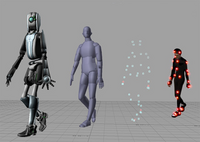
Photo from wikipedia
By introducing collision information into divide-and-conquer attacks, several existing works transform the original candidate space, which may be too large to enumerate, into a significantly smaller collision space, thus making… Click to show full abstract
By introducing collision information into divide-and-conquer attacks, several existing works transform the original candidate space, which may be too large to enumerate, into a significantly smaller collision space, thus making key recovery possible. However, the inefficient collision detection algorithms and fault tolerance mechanisms make them time-consuming and their success rate low. Moreover, they may still leave very huge chain spaces that makes it difficult for key recovery. In this article, we exploit collision attack to optimize Template Attack (TA), and propose a Lightweight Collision Detection (LCD) algorithm. The proposed method exploits a jump detection mechanism to efficiently reduce the repetitive collision detections on chains with the same prefix sub-chains. We then introduce guessing theory to reorder the collision detection of the sub-keys according to their guessing lengths, and provide us with an evaluation tool. Finally, we design a highly efficient fault tolerance mechanism for our LCD to allow flexible thresholds adjustment, and further optimize sieving mechanism to efficiently extract the best chains with the largest number of collisions. Experimental results fully demonstrate LCD's superiority.
Journal Title: IEEE Transactions on Computers
Year Published: 2020
Link to full text (if available)
Share on Social Media: Sign Up to like & get
recommendations!